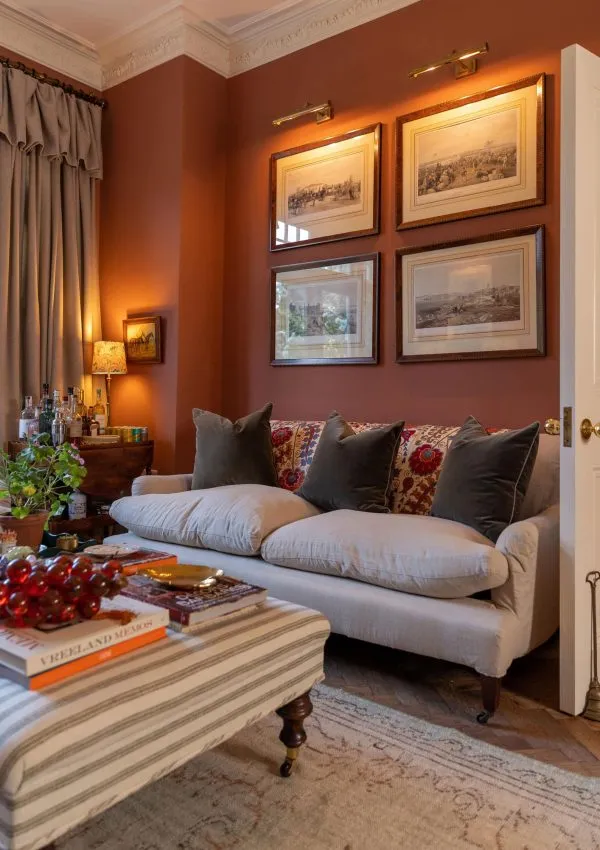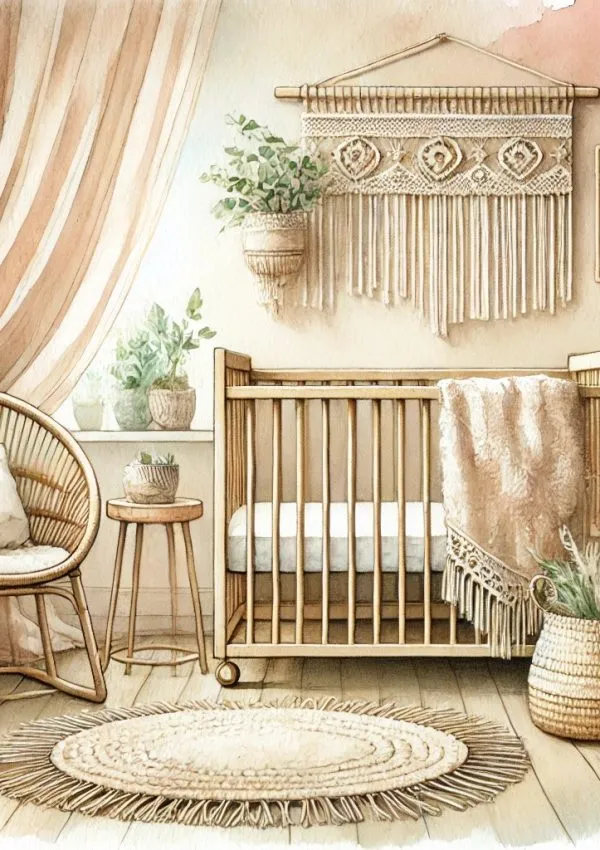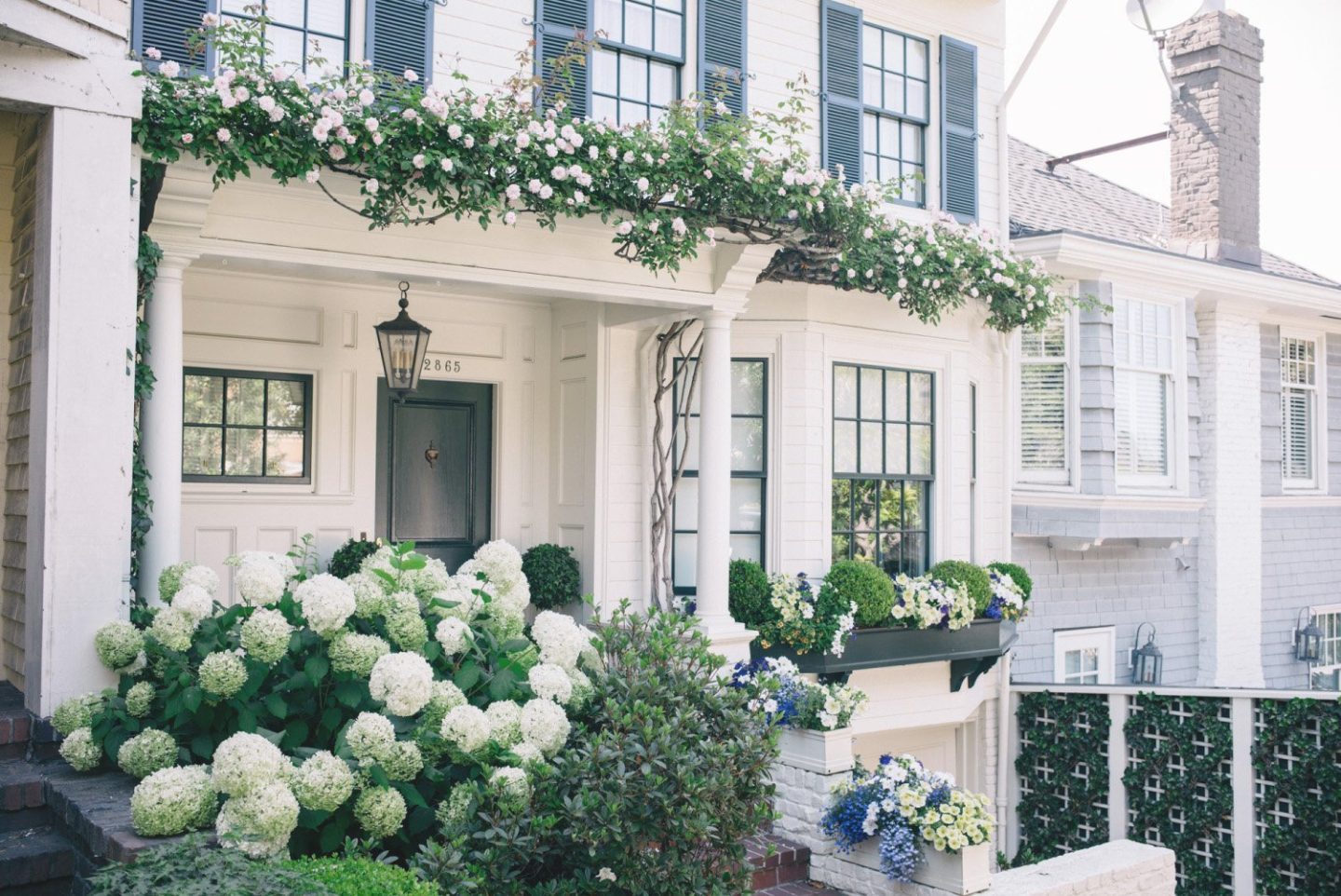Painted skirting boards have the remarkable ability to transform a room, adding a touch of sophistication and tying together the various design elements. Whether you prefer a subtle and seamless integration or a bold splash of colour that makes a statement, painting your skirting boards offers endless creative possibilities.
Skirting boards—also known as baseboards—serve as a functional and aesthetic bridge between the walls and floors of a room. While they are primarily installed to protect the lower parts of walls from scuffs and wear, they can also contribute significantly to the overall aesthetics of your space. And there’s no better way to elevate their appeal than with a fresh coat of paint.
If you’re ready to give your space a fresh new perspective and add a touch of elegance to your home, read on. Discover how painted skirting boards can be the perfect finishing touch that takes your interior design to the next level.
Blue Painted Skirting Boards
In this stunning image by F&P Interiors, the skirting board, door, and trim have all been painted in a muted blue, and as you can see, it works beautifully with the floral patterned wallpaper. If you have chosen to use wallpaper in your home, take a look at the colours used in the pattern. Pick out one of the pain colours and paint your skirting boards in the same colour to create a big impact in your space.
Black Painted Skirting Boards
If you want to give your space a striking look without painting the walls, painting your skirting boards is a great way to do it. In this example by Little Greene, the skirting boards and trim around the doors have been painted in Black, with the floorboards painted in a lovely muted blue colour. This brings the space to life and adds plenty of colour and personality whilst keeping the walls white, which keeps the space feeling light and bright.
Pink Skirting Boards
Painting your skirting boards pink is a great way to add a fun pop of colour to a kids room without having to do too much work. You can add in additional splashes of colour with artwork and accessories to create a space that feels joyful and alive.
Grey Painted Skirting Boards
In this example by Mylands Paint, the skirting boards have been painted in a beautiful soft grey colour. This helps add a sense of depth to the space, and ties in with the pretty pink and grey patterned floor tiles.
Painted Skirting Boards to Match a Half Painted Wall
If you want to go a step further, you can paint your skirting boards to match the colour of the wall, or even just paint the skirting boards and half the walls to create a more unusual look.
How to Paint Your Skirting Boards
Giving your skirting boards a fresh coat of paint can transform the look of any room in your home. However, painting skirting boards requires some precision and technique to achieve that professional look. In this section, we’ll guide you through the process step-by-step with tips on preparing the surface, applying the paint, adding finishing touches and maintaining painted skirting boards for long-lasting results. Say goodbye to scuffed-up baseboards and hello to beautifully painted skirting boards!
Preparing the skirting boards
Before you start applying paint to your skirting boards, it’s important to prepare the surface properly. Start by cleaning the baseboards with a dry cloth or duster. This will remove any dust or debris that may have accumulated over time.
Next, take a damp cloth and wipe down the skirting boards thoroughly. This will help remove any dirt or grime that may be stuck on the surface. If there are stubborn stains, use a mild detergent solution to clean them off.
Once you’ve cleaned the baseboards, check for any cracks or holes in the woodwork. Fill these gaps with wood filler and sand them down until they’re level with the rest of the surface.
If your skirting boards have been previously painted, give them a light sanding to create a smooth surface for painting. Use 120-grit sandpaper and work in circular motions along the length of each board.
Protect your floors from paint drips by covering them with masking tape or plastic sheeting before you begin painting. With these simple steps, you’ll have perfectly prepared skirting boards ready for painting!
Applying the paint
Now that you’ve adequately prepared your skirting boards, it’s time to apply the paint. Here are some tips on how to do so effectively.
Firstly, choose a high-quality brush or roller for applying the paint. A good quality brush will help you achieve a smooth and even finish while minimizing any brushstrokes left behind.
Next, always start at the top of the skirting board and work downwards. This will help prevent any drips from ruining your hard work as you go along.
If using a brush, dip it into the paint just enough to cover around one-third of its bristle length. Then tap off any excess before starting to apply onto the board in long strokes.
For rollers, use long vertical strokes and try not to over-roll in order to avoid creating bubbles or leaving an uneven texture on your skirting boards.
Remember that you may need more than one coat depending on what type of look you’re going for – ensure each coat is completely dry before applying another layer.
Finishing touches
Once you complete painting the skirting boards, it’s time to add some finishing touches that will take your project to the next level. These final details can make a big difference in how polished and professional your painted skirting boards look.
One important aspect of adding finishing touches is removing any excess paint or drips from the skirting board surface. Use a small brush or sponge to carefully clean up any imperfections before they dry completely.
Another way to achieve a professional-looking finish is by sanding down any rough areas on the surface of the skirting board once it has dried completely. Use fine-grit sandpaper for this task and be careful not to over-sand as this can damage the paintwork.
If desired, you can also add a second coat of paint for added durability and coverage. Make sure to allow adequate drying time between coats and use light strokes with your brush or roller.
Consider adding some decorative elements such as stencils or patterns along the top edge of your skirting boards for an extra special touch. With these simple yet effective finishing touches, your newly painted skirting boards are sure to impress!
Maintaining painted skirting boards
Once you have successfully painted your skirting boards, it is important to maintain them properly in order to keep them looking great for years to come. Here are some tips on how to maintain your painted skirting boards.
Firstly, avoid using abrasive cleaning tools such as scouring pads or steel wool when cleaning your skirting boards. These can scratch the paint and damage the finish. Instead, use a soft cloth or sponge with mild soap and water.
Secondly, be careful not to spill any liquids on your skirting boards. If you do accidentally spill something, clean it up immediately before it has a chance to dry and stain the paint.
Thirdly, avoid dragging furniture or other heavy objects across your skirting boards as this can also cause scratches and damage the paint.
Consider touching up any chips or scratches that may occur over time. This will help keep your painted skirting boards looking fresh and new for longer. Simply sand down any rough edges around the damaged area and then carefully apply a small amount of touch-up paint with a brush.
By following these simple maintenance tips, you can ensure that your newly painted skirting boards stay in top condition for years to come!
Troubleshooting
With these tips, painting skirting boards can be a simple and enjoyable DIY project. However, sometimes things don’t go according to plan. Here are some common troubleshooting issues and how to solve them:
- Paint is peeling: This could mean that the surface wasn’t properly prepared or that the undercoat wasn’t applied evenly. Sand down the affected area, remove any loose paint flakes, and repaint with an even coat of undercoat before applying another layer of paint.
- Paint is cracking: This could mean that too thick a layer was applied or that the paint has dried out too quickly due to high temperatures or direct sunlight. Remove all cracked paint layers with sandpaper and reapply thinner coats of fresh paint.
- Uneven finish: If you notice brush marks or areas where the coverage isn’t even, it might be because you haven’t allowed enough drying time between coats or have used a low-quality brush. Wait for each coat to dry completely before applying another one and invest in good quality brushes.
By following these steps carefully and addressing any issues as soon as they arise, your painted skirting boards will look professionally finished for years to come!






Leave a Reply